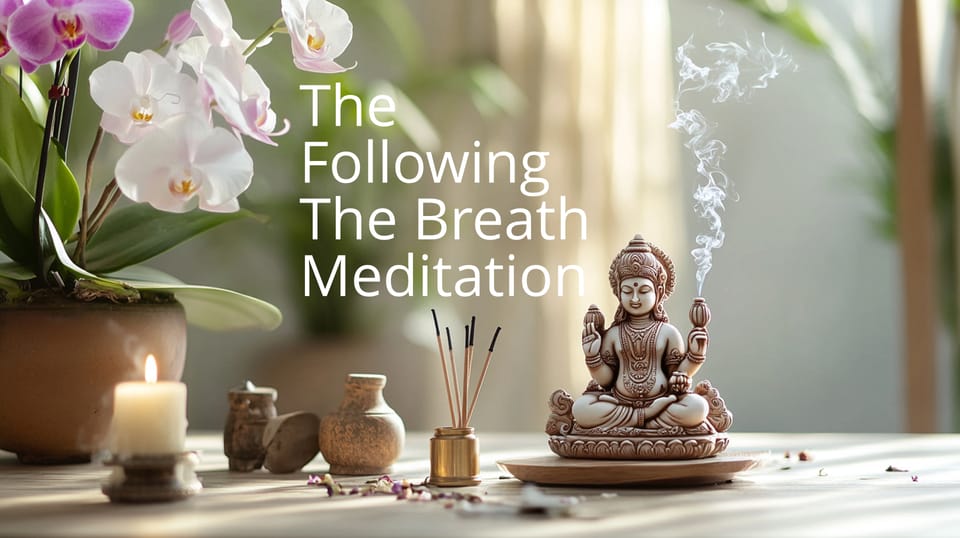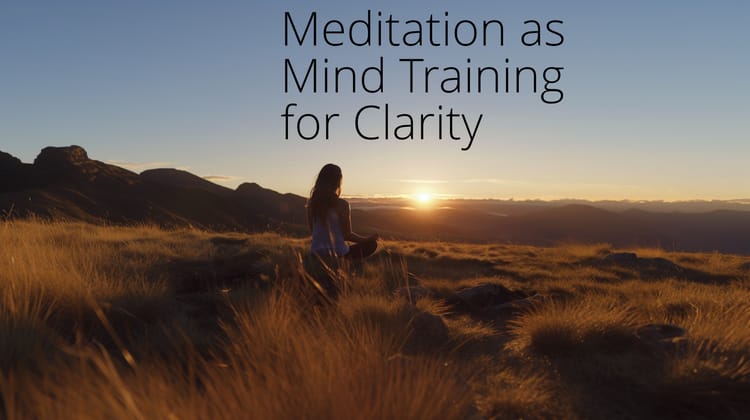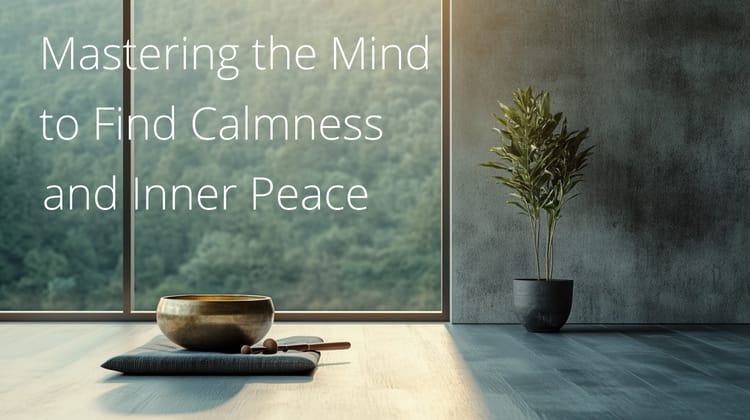Meditation of the Month for September - Following the Breath

This article supports the podcast with links below. It is an edited version of the transcript from the class I recorded from the podcast. I shall release more over the course of the month.
Listen on your favourite podcast app

Class 1. Accessing the present moment
In this class, we learn how focusing on the breath enables us to connect to the present moment. We also learn how to practice this and how this skill can work for you during your day to help you switch on mindful awareness and step out of the craziness of the modern world.
Meditation of the Month
We will have a meditation each month and then have some support for that meditation. There will be focus on it, explanations of how it works, how you can benefit, what the downsides might be, any dead ends, etc.
Starting with Following the Breath
So, we're going to start off with the 'following the breath' meditation, of course. And the reason I say "of course" is that it is such a multifaceted practice.
Anchoring in The Present Moment
The reason we have a practice like following the breath is that it's a way of anchoring you in the present moment. Now, I need to be very clear about how that happens. To my knowledge, you won't hear this anywhere else, but following the breath enables you to become aware of the passage of time.
The Challenge of Presence in a Crazy World
Let's say you're in a cafe, and a lot is happening. People are chattering, and there is the sound of the coffee machine, chairs scraping, and doors swinging. Then there's traffic outside, and there might be a baby crying or other sounds.
You want to be present; you want to experience it from a mindfulness perspective rather than just ignoring it in favour of some narrative churning away in your head that you probably never put there in the first place. You don't want that, and so you say to yourself, "Okay, what I want to do is be present," and there you are, trying to be present.
The Mind's Tendency to Wander
And what will happen, because this is what the mind and the brain will do in a busy environment, is your attention will be drawn to one thing after another. There is all of that list of sounds that I explained, and also there are people coming in and leaving and ordering, and there's the staff moving around. Other people are drinking coffee at the other tables, and so on.
The Challenge of Staying in the Present Moment
What happens then is that you're out of the present moment because your mind is going from one thing to another. The reason I say it's out of the present moment is that the reality check for presence is awareness of the passage of time.
Settling into Mindfulness
After a while, you can settle into this. You become so familiar with it that it becomes like a switch in your head—click on, click off. It is literally a switch.
The Brain and Mindfulness
There are two sets of brain areas: the task-positive network and the default network, and only one set is active at any point. When you switch on mindfulness, you're switching on the task-positive network and moving out of the default mode network.
The Difference Between Mindfulness and Distraction
You might say, "Oh, well, surely that's what happens when I'm moving my attention from one thing to another." The answer is no because you're processing all of that. It has meaning to you, catches your attention, and will trigger all sorts of responses.
The Cascade of Cognitive Responses
Is that person who just walked in, are they a difficult person? Are they drunk? Are they angry? Is that person coming over here to sit next to me or not? There's no way of avoiding all of a cascade of cognitive and emotional responses to the environment, and so that's all default mode because what you're doing is you're checking in with your memory, with your experience as to whether that person's a difficult person, whether somebody's going to come over and ask to sit next to you, and if they do, are you going to be comfortable with that, and so on.
How to Switch Mindfulness On
So, how do you switch mindfulness on in a crazy world experience with all these things happening? Well, you follow the breath. You become aware of the breath, but you're doing that to help you notice the passage of time.
Tuning into the Present Moment
Once you're aware of the passage of time in this respect, it's like the ticking of a clock—the breath is a very slow tick, with a tick every 10 seconds or so. If you tune into that, you're then present.
Learning the Experience of Presence
You've learned, I've taught you and you've learned for yourselves, the experience of presence, of awareness.
Now, the quality—this is a huge win for meditators—the quality of the experience of observing the present moment in a busy cafe from mindfulness is pretty much the same as experiencing mindfulness while sitting on top of a mountain or on a deserted beach.
Switching into Mindfulness
So, you can switch into mindfulness, observe your environment, and become the observer of your mind as it creates a narrative about the person who might be difficult or who might be coming over towards you.
Regulating the Breath and Response
You're able to become aware of that and intervene in it, and you're regulating the breath that you're aware of by extending it. So, a difficult person comes in—you take an extended out-breath to regulate how you might feel about that or if somebody's going to sit next to you or whatever it might happen to be.
You're aware of it; you're able to respond in an infinitely more helpful way because it's a neutral place. You want to be neutral when you go into a tight bend in a car. You don't want to have your foot on the brake, you don't want to have your foot on the accelerator, you don't want to be going through the gears. You want neutral because only the steering of the car will determine your passage around that bend, and it's the same in life.
The Purpose of Mindfulness
You need to be in a neutral state to deal with difficult experiences and difficult people. That's what mindfulness is for. It's an observation mode, it's a sentinel mode.
The Ancients Discovery of Following the Breath
The ancients would have discovered this because it's a switch-on, switch-off experience. Let's say you're alone in some woodland; you're switched on to the environment, and you're switched on to the present moment.
When you come into a crazy city, your mind will be in this other state where it's comparing, judging, and evaluating everything. By following the breath, you're training yourself to switch on the sentinel observation mode. This is how human beings have evolved to respond to everyday experiences.
Practicing Mindfulness in Various Environments
When you practice noticing the breath and noticing yourself click into default mode when your mind wanders, it's pretty much the same as clicking into default mode when you're in a busy environment. There's not really a lot of difference except, of course, you know the mind wandering is all internal, and the difficult environment is external, but there's not a great deal of difference.
And the response to both of these is to slip back into present-moment awareness.
The way we train is by following the breath.






Comments ()